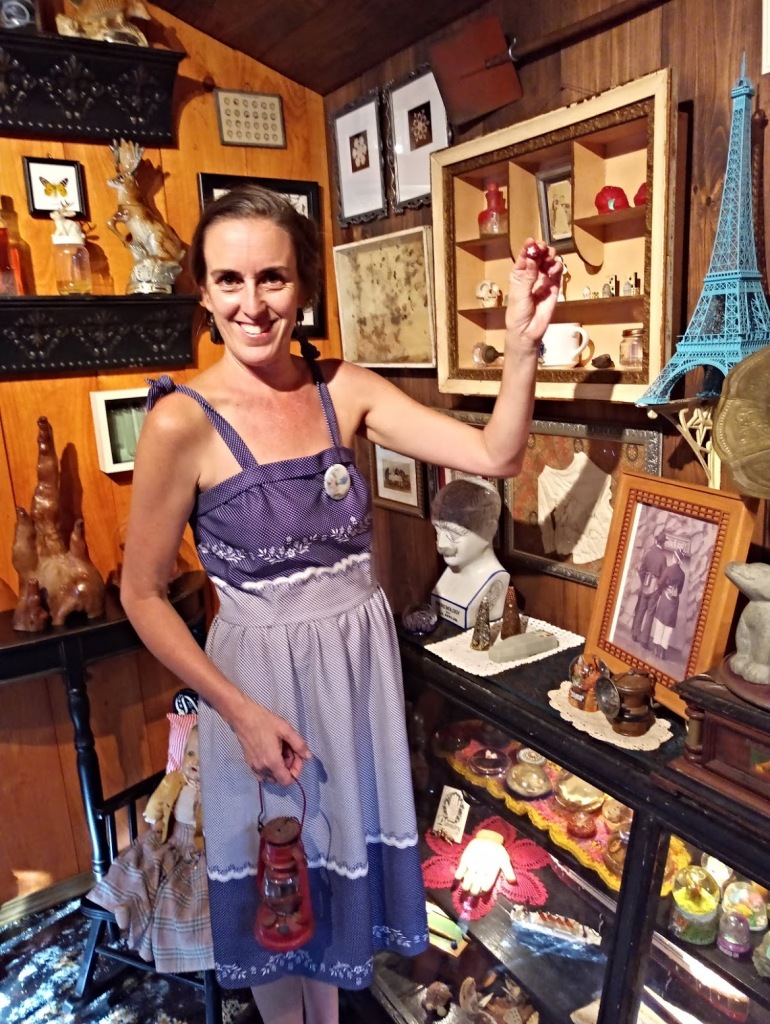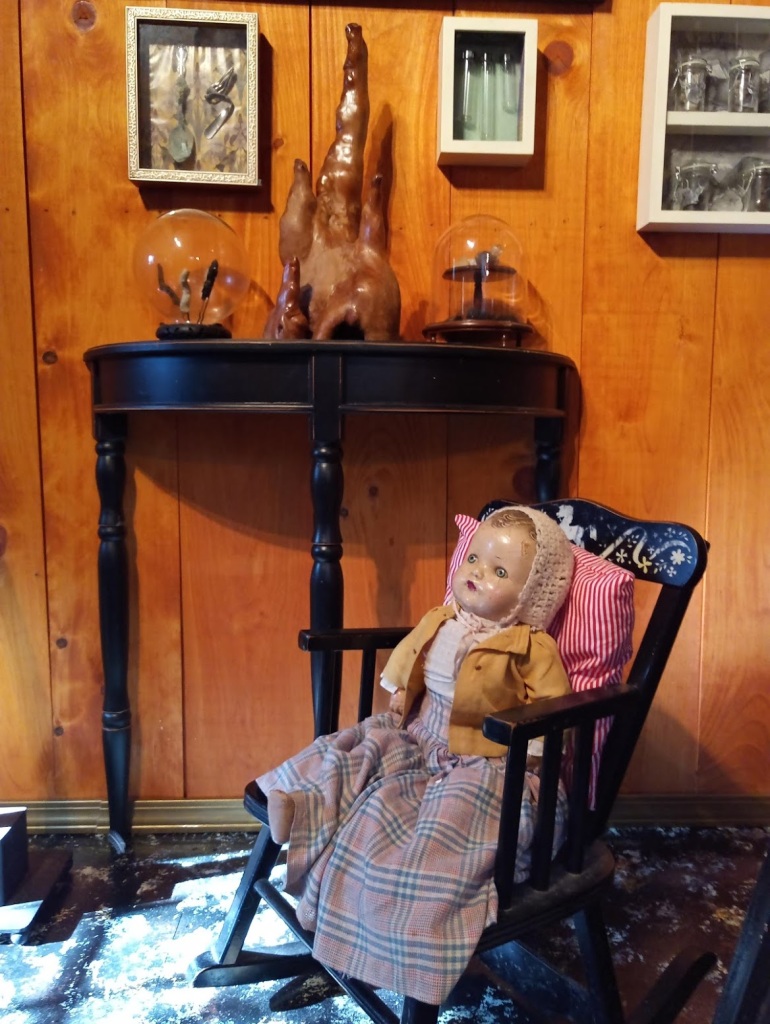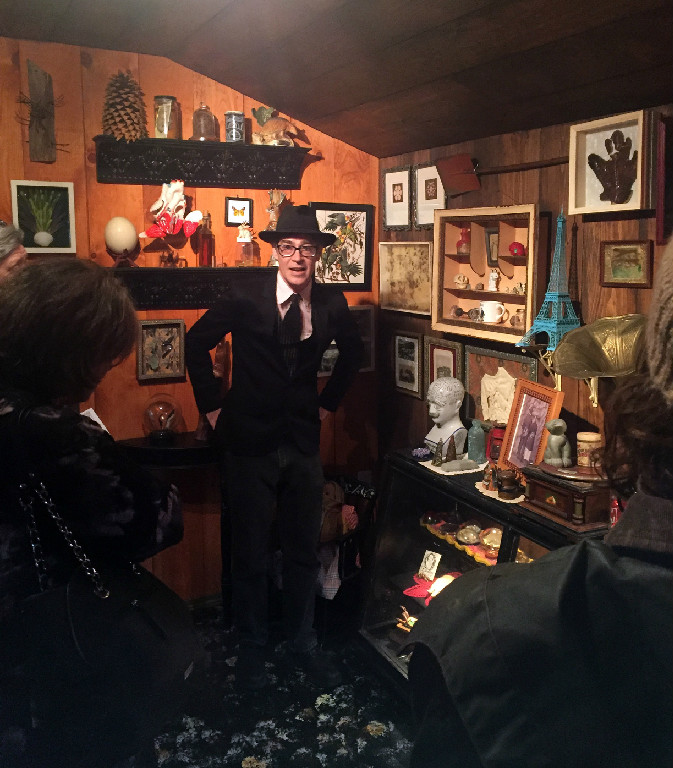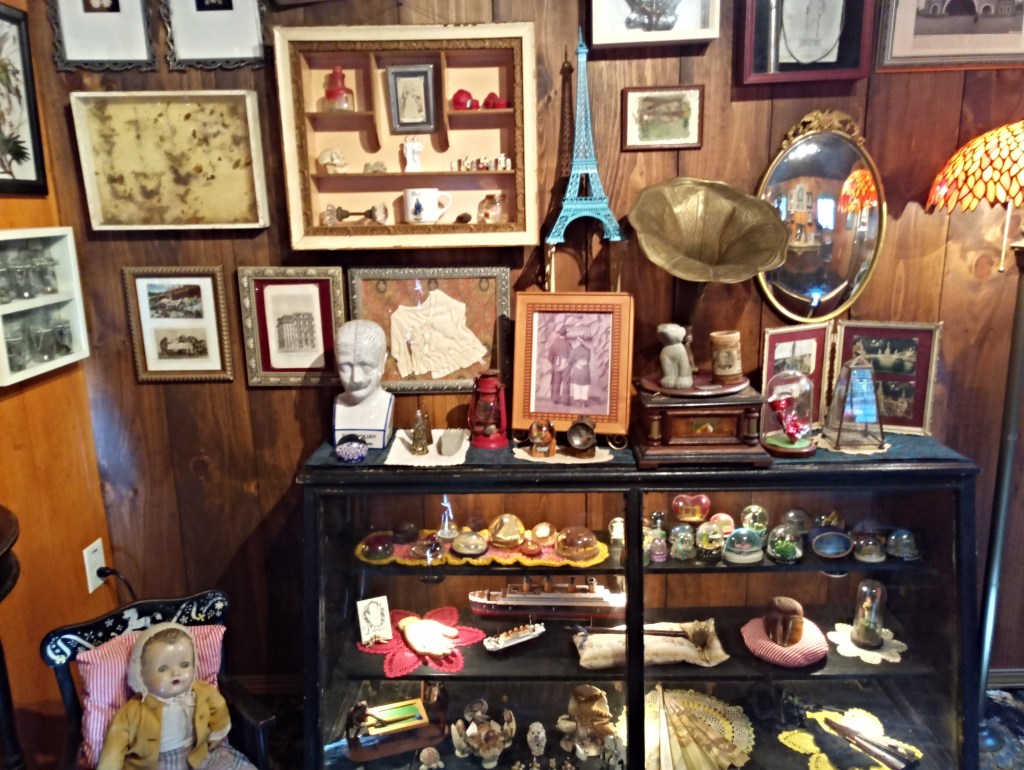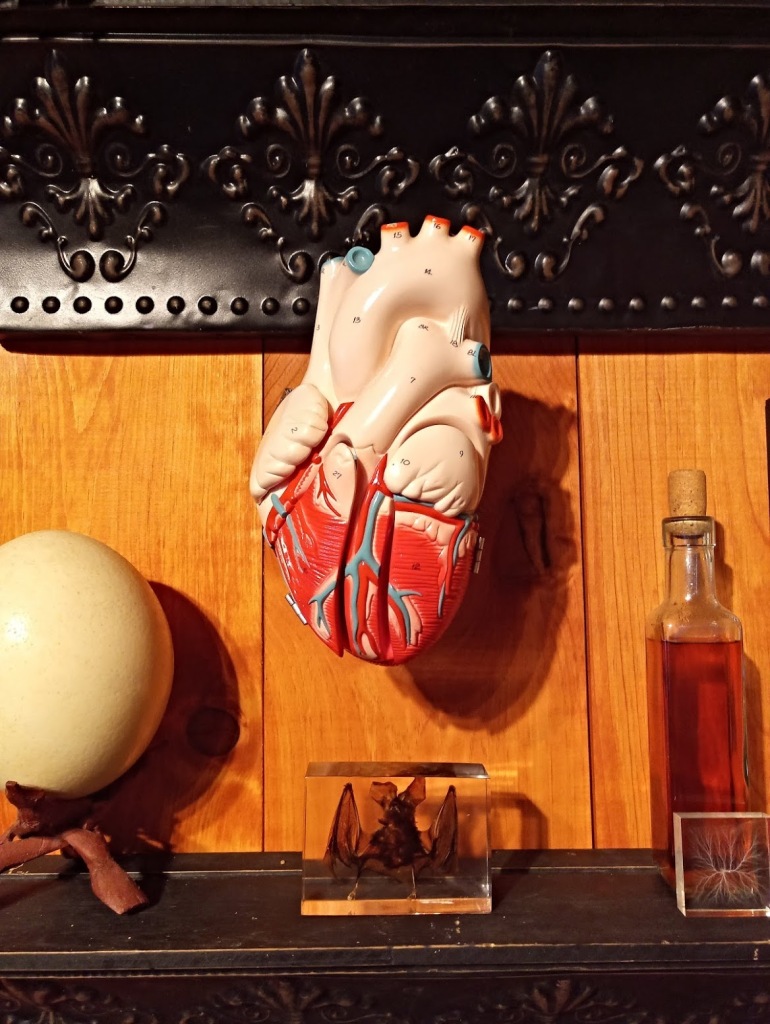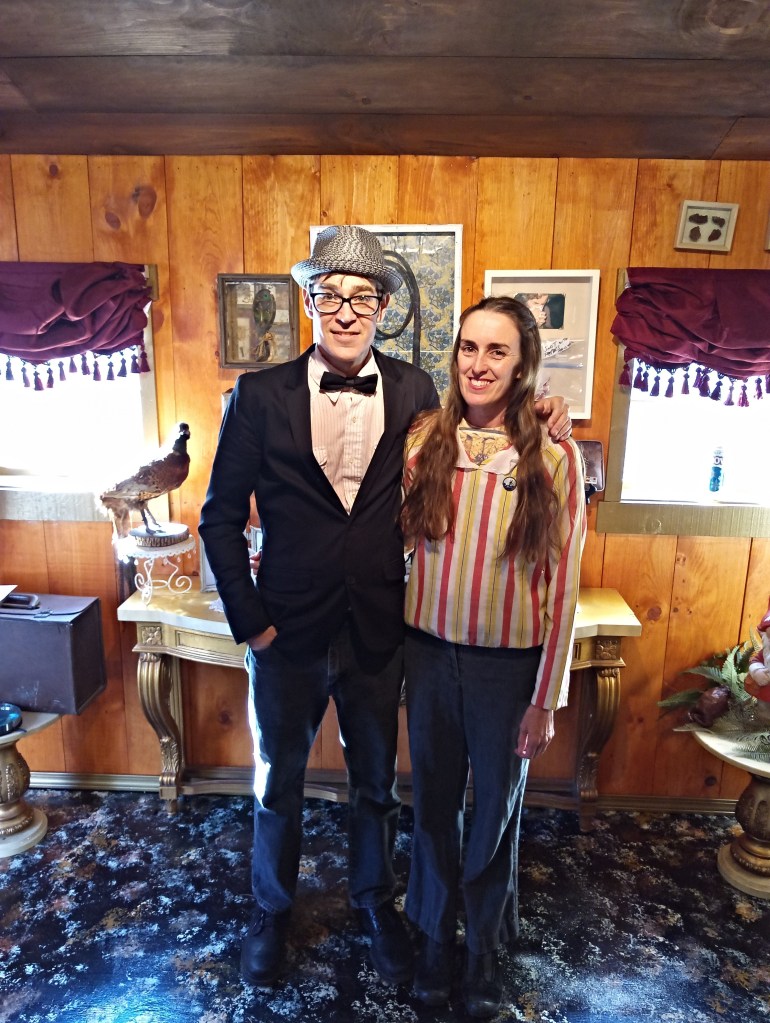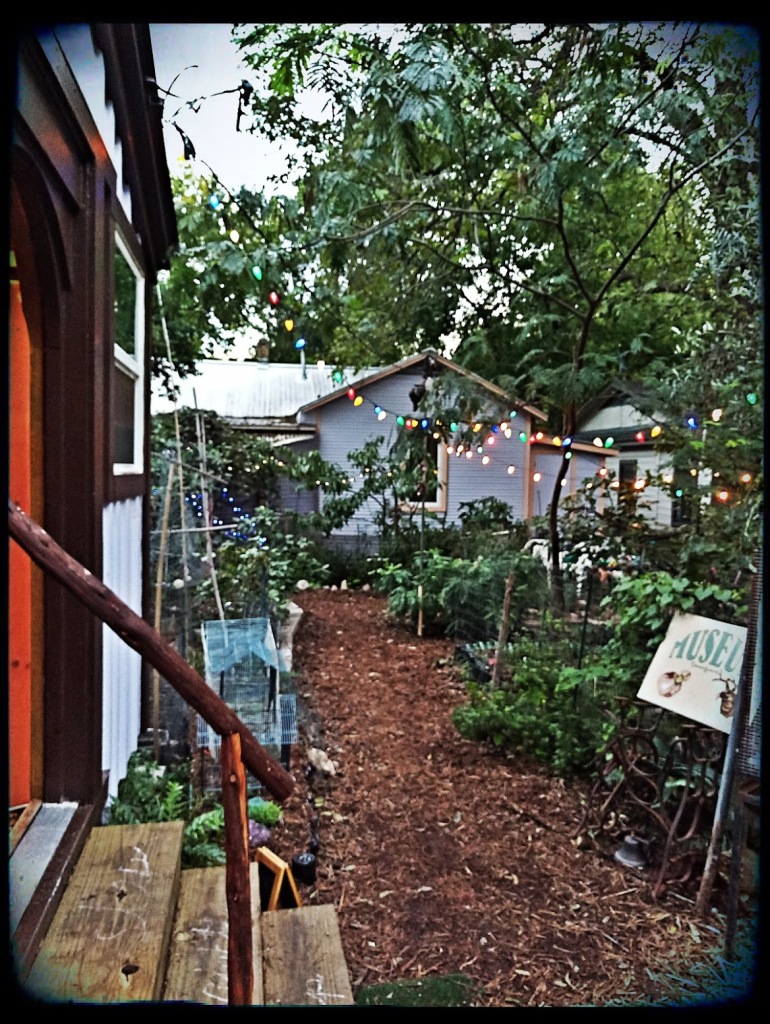
Welcome to the Museum of Natural & Artificial Ephemerata (MNAE), where you have been all along!
- We offer curator led tours on Saturdays. Please RSVP for a tour.
- Revisit our 2004 – 2013 Themed Exhibitions!
- Atmospheres, a mini-themed show, was on view at The Really Small Museum’s “The 14th Corner Contemporary,” July 2022. It ended when a car accident hit the display case.
Located in east Austin, we are one of the few remaining in-home, family-run museums in America. Our mission is to preserve endangered modes of collection, offer a venue where the public can share objects and their stories, and contemplate diverse processes of collecting. You can write to us at mnae.austin@gmail.com.
Visitors to the impermanent collection will tour six interwoven collections:
- The Celebrity Collection
- Naturalia & Artificialia
- Urban Phantasmagoria
- The Snowglobe Collection
- The Bulk Collection
- … and an Entire Wing Dedicated to Sleep!

The impermanent collection embeds within its displays, its aesthetic, and its very representational methods a rough map of the histories of collecting. Our panoramic vision glides from saintly relics to wunderkammern, and from public museums founded in the Enlightenment’s wake to mutant museums marketed for urban leisure — namely, dime museums, world’s fairs, and theme parks. Each of these historic forms of collection dealt the public a stacked deck, playing games with the tensions between truth and falsehood, nature and culture, life and death. The impermanent collection shuffles those decks together.
The Museum was founded by Mercury Curie and Rasputin Zaplatynska (a.k.a. Rolls Joyce, Jr. ) in Tucson, AZ, on November 7th, 1921, in the early afternoon, during a monsoon storm, as winged ants took to the sky. Their goal was to explore histories and forms of collecting, with an emphasis on preserving endangered modes of collecting (saintly relics, wunderkammern, and dime museums in particular) — a sort of zoo for museums. Although the original curators passed away in the 1940s, the current curators, Scott and Jen Webel (Scott being Zaplatynska’s great grand nephew) reopened the museum in Tucson in 1999 before moving to Austin, TX, in 2001. In Austin, we began curating community themed exhibitions to expand on our signature displays in the impermanent collection.
An allegory of loss, the impermanent collection demonstrates the most advanced methods for the reproduction of absence concerning that ineffable silhouette of modernity which measures out, in negative, the penetration and patrol of rationalization. Like a smoke-enswirled detective, the impermanent collection powders the vanishing tracks of that process known as disenchantment.
